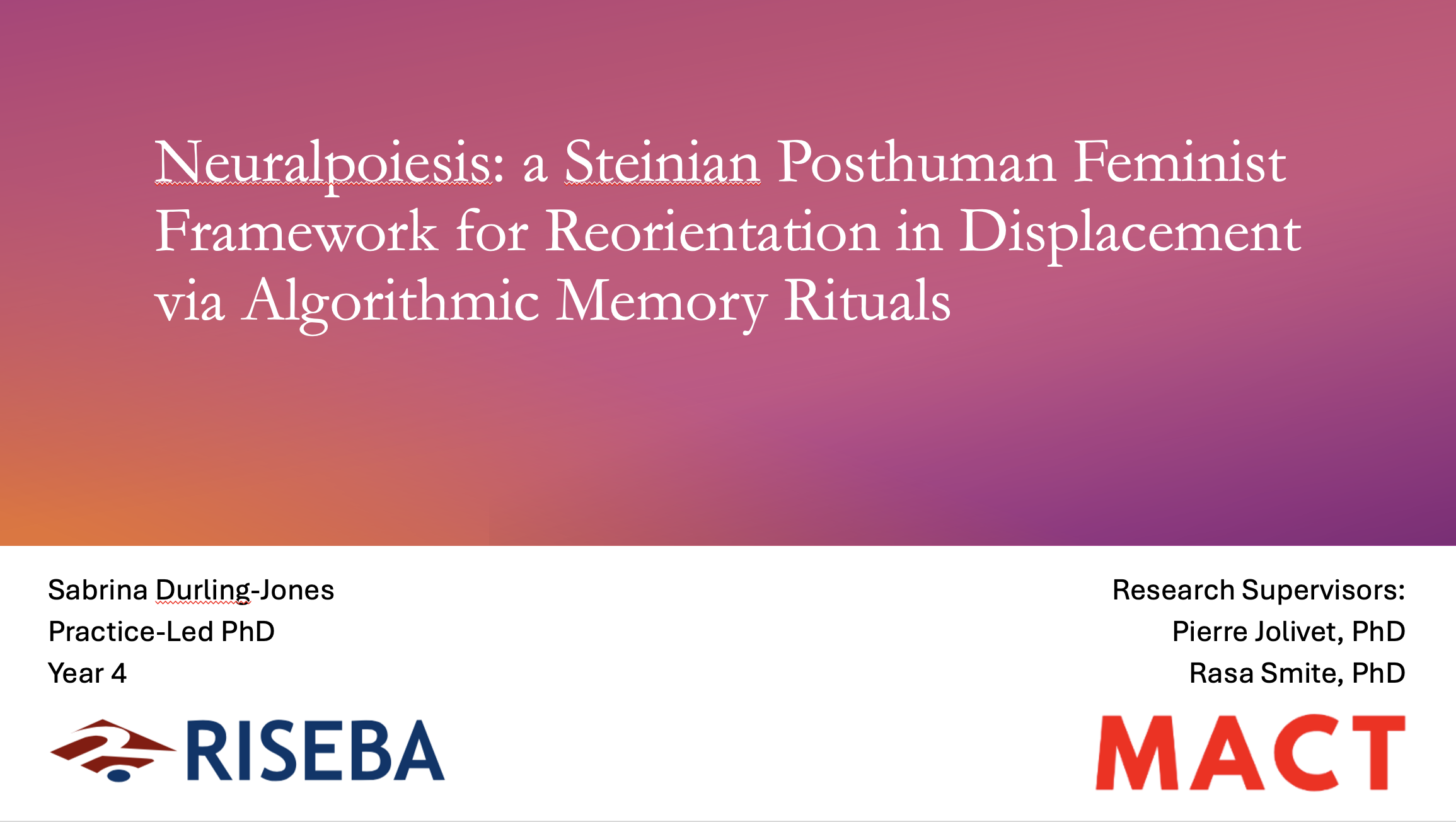Neuralpoiesis
(Noun)
ˈnu̇r-əl - pȯi-ˈē-səs
An embodied, algorithmic framework designed to evoke emotional connection through the generation of memory sensation visualizations using neural radiance fields (NeRFs).
Inspired by Edith Stein’s concept of non-actuality (1917), Karen Barad’s intra-action (2007) and Rosi Braidotti’s Posthuman Feminism (2022), the term neuralpoiesis describes visual artifacts generated through technological rituals of reorientation.
Emphasizing memory as a fusion of past sensations and present encounters while highlighting the transformative potential of embodied, technological processes, neuralpoiesis positions algorithmic memory rituals as a posthuman feminist praxis for generating non-actual memories and emotional connection via technologically mediated, embodied visual practices.
Algorithmic Memory Ritual
Structured, repetitive processes mediated by advanced algorithms, such as Neural Radiance Fields (NeRFs), that enable individuals to capture, reconstruct, and re-experience embodied memory sensations. These rituals, performed through intentional actions like walking and digital scanning, allow displaced individuals to reorient themselves in the present by creating non-actual, sensory memories mediated through technology. The framework offers an embodied, transversal approach to coping through a novel synthesis of technology, memory, phenomenology, and feminist theory:
Algorithmic processes (NeRFs)
Ritual as intentional, repetitive action mediated by technology (3D scanning)
Embodied memory and non-actuality
A Framework/practice that is rooted in Posthuman feminist theory and Steinian phenomenology
Reorientation and emotional coping for displaced individuals

